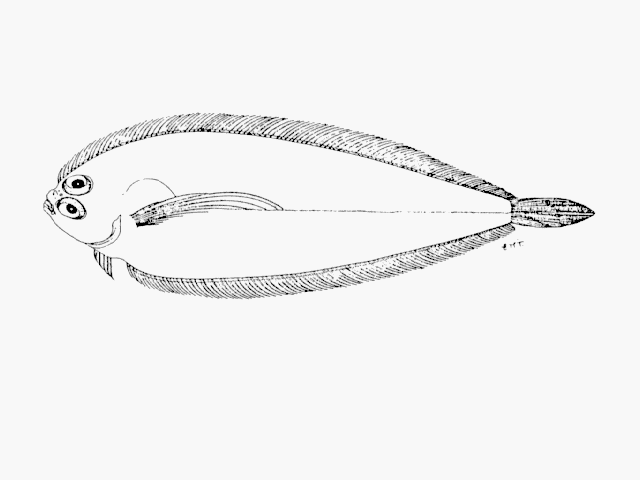| Bothidae (Lefteye flounders) |
| 19 cm TL (male/unsexed) |
|
bathydemersal; marine; depth range 180 - 380 m |
| Western Indian Ocean: Kenya, Mozambique and South Africa. |
|
Dorsal soft rays (total): 105-115; Anal soft rays: 83-96; Vertebrae: 51-53. This species is distinguished by the following characters: head length 5.0-6.9, body
depth 2.6-3.1 in SL; upper profile no notch anterodorsal to upper margin of upper eye; snout
rounded; upper jaw shorter than lower eye diameter; teeth on lower jaw of the blind side in 1-2 rows; pectoral-fin length of ocular side 3.1-4.7 in SL, nearly twice as long as HL; dorsal fin beginning behind posterior nostril of blind side, the first two rays detached from other rays of the fin, and dorsal-fin pterigiophores shorter than neural spines of first four caudal vertebrae; D 105-115, A 83-96, pectoral-fin rays on ocular side 12, blind–side 11, lateral line scales about 94, gill rakers 5 + 11, vertebrae 11 + 40-42 (Ref. 126083). |
|
|
Data deficient (DD); Date assessed: 10 August 2020 Ref. (130435)
|
| harmless |
|
Type locality of Lambdopsetta pectorali and Parabothus thackwrayi, Kwazulu-Natal. The current whereabouts of one of two specimens in the original description used for L. pectoralis is unknown, that BMNH 1922.3.27.20 is now designated as the lectotype of this species (Ref. 126083). |
Source and more info: www.fishbase.org. For personal, classroom, and other internal use only. Not for publication.

